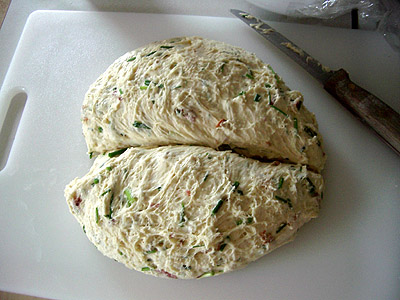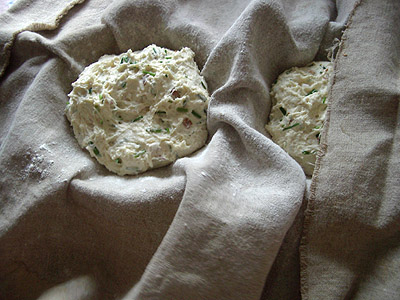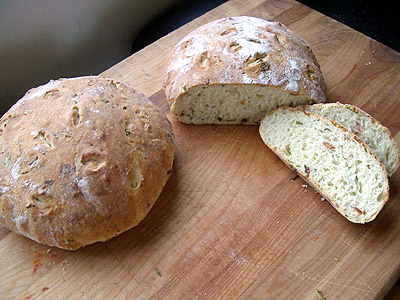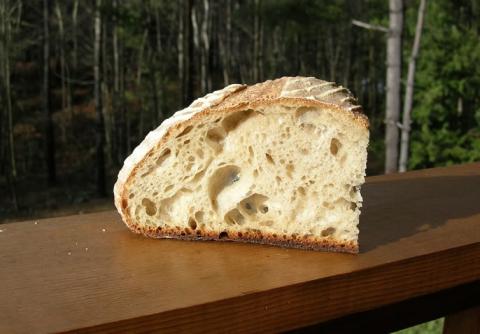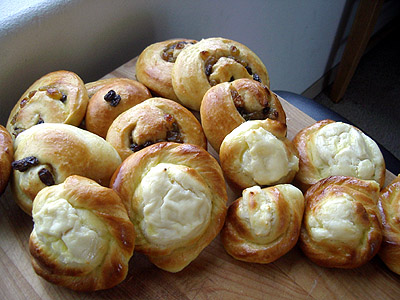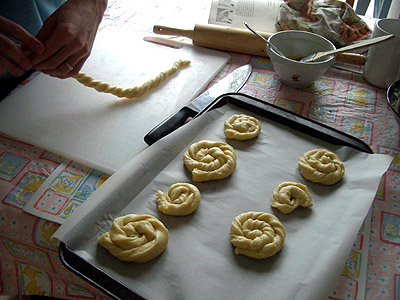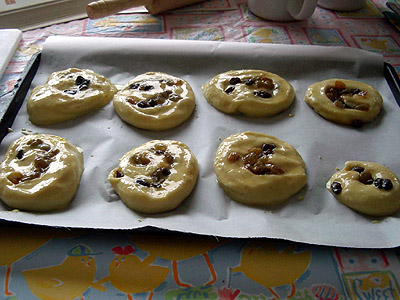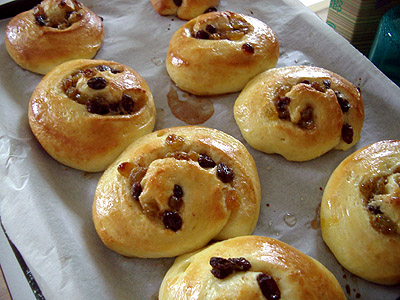The following is a description of how I maintain my 100% hydration (1:1 flour:water by weight) starter. The term 100% hydration refers to the baker's percentage of water in the starter, i.e. the water in the starter is 100% of the weight of the flour in the starter.
This maintenance regime assumes that your starter is already healthy, fresh, and active. This is not what I would do to "start a starter", but rather it is the maintenance regime I follow to store, revive, and use my starter over time.
The following characteristics are for a 100% hydration starter. The characteristics, signs of health, problems, and readiness for use are different for starters maintained at different hydration levels.
Characteristics of my 100% hydration white flour starter:
- The weight of flour and water in the starter are equal.
- The flour is either bread or AP flour with protein content around 11-13%.
- The water is bottled (Poland Spring).
- Normally fed at room temperature.
- Stored in the refrigerator when not being fed.
- The consistency can be described as a thick, stirrable paste after it is fed.
Characteristics of a recently fed, fresh, active 100% hydration starter:
- It rises by double in about 4-5 hours at room temperature after a feeding of 1:2:2 (starter:flour:water by weight)
- It maintains a reasonably thick, elastic consistency after rising by double.
- It smells very pleasant. The smell could be described as flowery, tangy, and slightly sweet.
- No liquid layers develop on top or in the middle even hours after rising by double.
- Hooch (an alcoholic layer of liquid on top) forms eventually when it is stored in the refrigerator for a week or more or left out for a long time at room temperature after doubling.
Characteristics of a 100% hydration starter that is not yet ready or is possibly unhealthy:
- Unpleasant odors a few hours after feeding.
- Separated layers of liquid form a few hours after feeding.
- Takes longer than 4-6 hours to rise by double at room temperature after a 1:2:2 feeding (starter:flour:water by weight).
- Develops a runny consistency a few hours after feeding.
An Important Note on the Large Effect of Temperature on Rise Times
Before launching into the information below on maintaining starters, it is worthwhile to point out one of the largest points of confusion in sourdough starter maintenance. Temperature has a big effect on the speed of reproduction and the activity of the organisms in a sourdough culture. For example my kitchen may average 76F in the summer and only 69F in the winter. At 76F, my starter may rise by double after a 1:2:2 feeding in 4.2 hours, whereas at 69F it will double in 6.4 hours. At 64F, it would take 9.4 hours. It is not a problem to follow the procedures below in a kitchen with a temperature averaging 64F; but clearly, you need to allow for rise times of roughly double in the various discussions below. So, adjust your expectations and timing accordingly, if your temperatures don't hover fairly close to 74F or so, which is the temperature assumed for the discussions below.
Assuming a healthy, active starter, here is the maintenance regime I follow to feed, store, revive, and use my starter.
Feeding
I almost always feed my starter 1:2:2 (starter:flour:water by weight) and then allow it to rise by double at room temperature, which should take about 4.5 hours when it is fully active and recently fed. Once it has risen by double, it is placed in the refrigerator. The starter can then be used directly from the refrigerator in a recipe for the next 3 days. On the first day, it is almost the same as it was right after it rose by double. On the second day, it has a little more flavor and may be ever so slightly weaker, but it is still at an excellent point to use in a recipe. After 3 days, it can still be used, but it will have stronger, more sour flavors, and it will be noticeably weaker in terms of rising power. If you have a recipe that uses a very small percentage of starter in the dough, it won't matter much if you use old starter. I've used week old starter in recipes where the flour contributed to the dough was only 5% of the total flour weight. If you are using the starter in a recipe that has a high percentage of starter, it may be better to use the starter after 2 days or less in the refrigerator.
Although it may not make much difference, I actually maintain my starter with a 1:2:2.2 feeding ratio, i.e. at a 90% hydration. With the bread flour I use (KA Bread Flour) that results in a consistency of a thick paste that is a little difficult to stir once you mix it up well. The amounts you work with don't matter much, either, other than the amount of flour being thrown out. I typically work with a total culture size of about 80 grams. My scale will measure down to 1 gram of precision. A typical 1:2:2.2 feeding would be (16g:30g:34g) of (old starter:water:flour). Below I am doing 1:10:11 feedings, which are done by feeding (4g:40g:44g) of (old starter:water:flour).
The above method works great, but see in the variation section below for an update on how I am feeding most recently to better accomodate a 12 hour feeding cycle. Also, I now use an even thicker consistency, around 80% hydration. It seems to keep longer this way on the counter or in the refrigerator.
Storage
Once the starter has been in the refrigerator for more than three days, I consider it to be in storage. It can't be used directly in a recipe, but instead will have to be revived. If I plan to store my starter for a period of time longer than 2 weeks, I usually will thicken it up, as it keeps better at a thicker consistency. However, even at 100% hydration, I've had no problems reviving my starter after 2 months. At thicker consistencies, the starter can last for many months in the refrigerator. I believe Glezer says it can last more than a year in a very stiff consistency, like 50% hydration. However, the longest I've gone with my starter is 2 months. I use glass canisters for both feeding and storage. I usually pour the ready to refrigerate starter into a fresh container, so that the sides are clean and the starter is stirred down to take up less volume. The containers have a rubber gasket that seals them from the air in the refrigerator but allows some gas to escape if pressure and gasses build up in the container.
Revival
When the starter has been in the refrigerator for more than a few days, it must be revived first before it can be used in a recipe. I do this by simply feeding it once or twice in the manner described under "Feeding". After being stored for a week or two or more, rising by double after a 1:2:2 feeding may take something like 6-8 hours at room temperature. If it only takes 6 hours, one feeding works fine. However, if it takes more than 6 hours to rise by double at room temperature, I generally feed it one more time. The second feeding usually takes much closer to 4.5 hours, which is an indication it is fully revived. On the occasion where it had been stored for 2 months, it took a third feeding at room temperature before the starter would rise by double in 4.5 hours at room temperature after a 1:2:2 feeding.
One subtle aspect of all this is the question of how long after the starter has doubled should you wait to feed it again. The starter needs to ripen enough to bring the cell counts up to their maximum level. In the period after you feed the starter, the cell counts of yeast and lactobacillus will double every couple of hours or so. Once the starter is ripe enough, the yeast and lactobacillus cell counts will stop increasing. The pH and acid levels get to a point where they attenuate the cell activity, and they can no longer multiply in numbers. So, you want to let the starter mature enough to reach that maximum cell count, and then feed it again or store it. Just based on experience, it seems like my starter does well as long as I let it sit for an hour or two beyond the point it doubles. I usually "stir it down" at the point it doubles, and then let it rise some more. However, I refrigerate it right when it doubles, since it will continue to ripen in the refrigerator. Recently, I was rushing my feeding schedule and slowed my starter down by trying to feed too early, just before it had completely doubled, in fact. The result was that it was taking longer than usual to rise. The solution was to let it sit a while longer for a few feedings in a row. It didn't take long at all for it to bounce back to doubling in 4.5 hours from a 1:2:2 feeding at room temperature.
Variations
You can feed at a lower or higher ratio than 1:2:2 in order to adjust the amount of starter you want to build to match a recipe or to better match the times when you can feed the starter conveniently. However, I never feed at a lower ratio than 1:1:1 to avoid any problems with acid building up or the starter becoming too ripe or underfed. Higher ratios can be used to lengthen out the rise time if you know you will not be back within 4-6 hours to store the starter in the refrigerator before it becomes too ripe. At warmer temperatures, the starter will rise by double much more quickly after a 1:2:2 feeding, taking something like 2.5 hours at about 85F, for example. At 85F the timing for rising by double will be very roughly half as long as at room temperature, and at 65F the timing will be very roughly twice as long (very, very roughly).
Recently, I've been experimenting with feeding ratios for a 12 hour room temperature maintenance schedule. I have found that feeding 1:10:11 (for a slightly thicker consistency I'm using 90% hydration), results in a 12 hour cycle. The starter will double 8 hours after the 1:10:11 feeding, and then I stir it down and let it ripen some more. If I feed every 12 hours on this cycle, the starter is at full strength from about 8 to 12 hours after being fed (all this at room temperature). When you feed a starter routinely at higher ratios, like 1:10:11, it will ferment for longer periods of time at higher pH. The result should be that the starter will have relatively more lactobacillus in it compared to a starter maintained with a 1:2:2 feeding ratio, since the lactobacillus thrive in a slightly higher pH environment (around 5 pH). I can't say what the effect on flavor would be, but it makes sense that the aromatic compounds and acids produced by the lactobacillus would be more evident in the one maintained with the high feeding ratio. Although this is not at all scientific, I do think that the starter I've maintained with a 1:10:11 feeding ratio has a more intense aroma than the one fed with a 1:2:2 ratio.
Even more recently (added 12/14/2007), I've settled on feeding every 12-17 hours using a feeding of 1:4:5 (starter:water:flour by weight). Using this procedure, the starter doubles in volume in about 4.75 hours at 76F or about 7.25 hours at 69F. Even at 69F, the starter has peaked in 12 hours, so it can be fed again. At 76F, it will peak and fall after 12 hours, but it is still at full strength and will rise vigorously when fed. It seems like a good compromise that can be used year-round for a 12 hour cycle. The starter can be maintained on the counter at room temperature indefinitely using this procedure. If I know I won't be baking bread for a while, I thicken up the starter by feeding it 1:4:7 to thicken it up when I feed it next, and put it in the refrigerator immediately after feeding. Then, I take it out a day or two in advance of the next bread-making session and revive by letting it rise by double and feeding 1:4:5 every 12 hours. Although I generally go through the revival procedure, I've found that the starter is at close to full strength even after 7 days in the refrigerator when stored this way. So, it's possible to take the starter out of the refrigerator, let it rise by double, and use most of it in a bread recipe, and take a tiny portion of it to revive for a couple of feeding cycles before returning it again to the refrigerator using the 1:4:7 feeding and refrigerating immediately.
When to Refrigerate
I like flavors to be less sour and more mild in sourdough breads I make. I've found that the right flavors and lower amounts of sour flavor seem to be there when I don't let the starter become overly ripe before using it in a recipe. That's why I tend to refrigerate when the starter has just doubled. You can experiment with feeding schedules that allow the starter to become more ripe before refrigerating. It will change the balance of organisms in the culture and therefore the flavor. Also, when you use a large percentage of starter, the larger amount of accumulated byproducts of fermentation in a more ripe starter will contribute directly to the flavor and texture of the dough, in addition to the contribution made by the subsequent fermentation.
An Additional Tip on Refrigerated Starter Storage
If you are using your starter fairly frequently, like once a week, then just refrigerating it when it doubles will work very well. You can use the starter directly out of the refrigerator for a period of time if stored that way. For storage it works well, as I've had no problem reviving my starter after 2 months when stored just after doubling. However, as Mike Avery commented below, and I've verified as well, feeding a well revived and healthy starter in such a way as to thicken it to a firm consistency and then refrigerating it immediately allows the starter to keep very well for longer periods of time. It can be removed from the refrigerator and allowed to rise by double or a little more and used directly in a recipe, even after a week, I've found. If you use this procedure, the starter should still be "revived" with enough feedings, usually one or two more, at room temperature to verify that the starter is rising at full strength again before it is again stored in the refrigerator.
Converting Starters
I sometimes make a recipe starter for a whole grain bread by feeding some of my starter with spelt or whole wheat. I have never fed a starter with whole grain repeatedly to completely convert it, so I have to accept the flavor as is and a small amount of white flour in my whole grain recipes. I'm sure there are many subtle flavor differences if you feed repeatedly and fully convert a starter from being fed exclusively with white flour to being fed exclusively with a whole grain flour. I've found the feeding and rising process works about the same way with whole grains for a recipe starter, except that the rise times seem a little bit faster with the whole grain flours.
Mistakes
It's pretty hard to kill a healthy starter, but here are a few ways to possibly send yours over the edge.
- Heat the starter to over 95F and kill the organisms - easier than you might think, for example...
- Use actual oven heat and get up over 100F very quickly.
- Place the starter in an oven with the light on - check carefully first - it can be much hotter than you think in there with just the oven light on and the door closed.
- Use hot water to feed your starter
- Put acids in the culture
- The culture doesn't need acid if it's healthy. It generates all the acid it needs on its own.
- Sometimes a small shot of vinegar or other acid, such as pineapple juice, may help fix a sluggish culture, but if you feed acid repeatedly, you can put too much in and kill the starter.
- Not feeding the culture for too long at warm temperatures or repeatedly underfeeding over long periods.
- When out of the refrigerator, the culture will be very active and must be fed to stay healthy.
- It is especially easy to underfeed a culture when temperatures are warmer.
- Overfeeding the culture
- If you feed before the culture has ripened enough repeatedly you can dilute the culture and eventually kill it.
- More likely to happen at colder temperatures, stiffer consistencies, or higher feeding ratios. Let the culture rise by double, then let it ripen for a number of hours beyond that. A dip should form in the middle when the culture is at its peak. You can let it go for a number of hours beyond the point it dips, but it should be ready to feed at the point it is dipping or collapsing on itself.
- If you refrigerate the culture for storage, you can let it just rise by double and then refrigerate it. It will continue to ripen in the refrigerator. However, allow it to come to full ripeness at room temperature over a couple of feedings once in a while, normally done when reviving the culture for baking, to avoid any decline similar to overfeeding caused by repeatedly refrigerating when it has just doubled.
Given the above, it makes a lot of sense to keep back a small amount of old starter in the refrigerator, even if just the scrapings from the inside of the container that came out of the refrigerator, until you're sure the feeding went well. It's also not a bad idea to make a small amount of stiff starter and keep as a backup. Some dry their starter and freeze or store it for backup.
Tips on Quantities Used, Mixing Technique, and Volumes (a scale is highly recommended, but to use measuring spoons...)
As I've gained experience, the amounts of starter I work with have dropped. I haven't found any disadvantages to using smaller quantities. For example, my most recent feeding routine (mentioned in the variations section above) is 1:4:5 (starter:water:flour by weight) is done by taking a clean jar, putting it on the scale and adding 5 grams of starter and 20 grams of water. I stir vigorously with a tiny whisk to aerate and thoroughly mix the starter into the water. Then, I add 25g of flour and use a fork to thoroughly mix the flour into water, forming a fairly thick paste - not quite a dough, but very thick. I then take a small spatula and scrape down the sides, put the lid on the jar, and place the jar in a nice unobtrusive spot on my counter where hopefully no one will disturb it.
If you don't have a scale, my first advice is to get one. It makes baking much more reliable, especially when you are trying to reproduce another baker's recipe. A good digital scale costs about $25 and is very much worth the trouble. Still, the procedure in the previous paragraph is easy to do by taking 1 teaspoon of starter, adding 2 tablespoons of water, and stirring vigorously to aerate and completely mix the starter into the water. Then, add 3 tablespoons and possibly another teaspoon or so of flour, and mix thoroughly with a fork. Scrape down the sides of the jar, cover, and place on the counter.
If you are planning to store the starter for a long time in the refrigerator, it helps to carefully drop the recently fed and thickened starter into a clean jar, so that there is no film of flour or paste stuck to the sides at all. Over a longer period, it is possible for mold to grow on a residue of flour paste left on the sides of the jar.
Comments
What I describe above is just one way to do it. I'm sure there are many other ways, but I find this method convenient and robust. It's hard to kill a healthy freshly fed and risen starter that is stored in the refrigerator. It is convenient that the starter remains in a good usable state for several days. Very small amounts can be used when storing it for long periods to avoid large amounts of flour waste. I store something like 100 grams when I'm planning to store the starter for more than a few days, so my revival can be used in a recipe without wasting much if any flour. Maintaining only one starter and converting it for recipes each time is easy and convenient, although by not fully converting the starter to a whole grain flour some flavor or other characteristics may be missed with this approach.

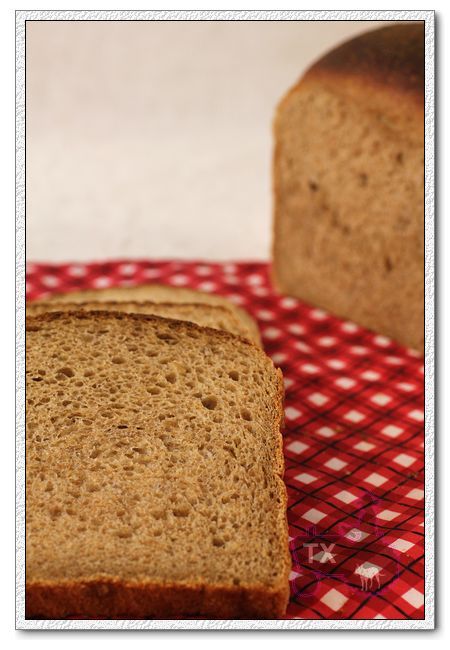



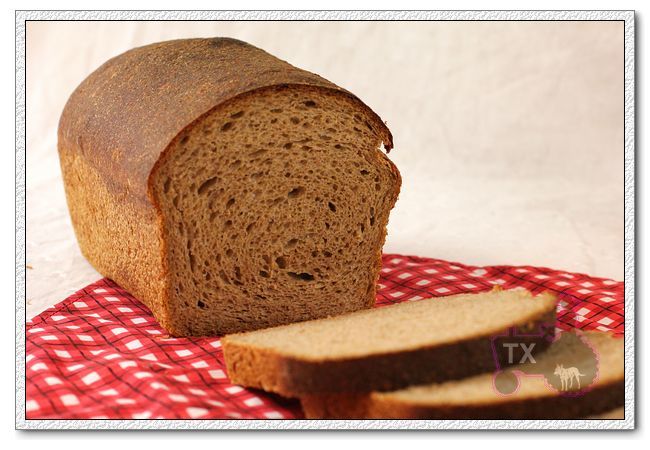


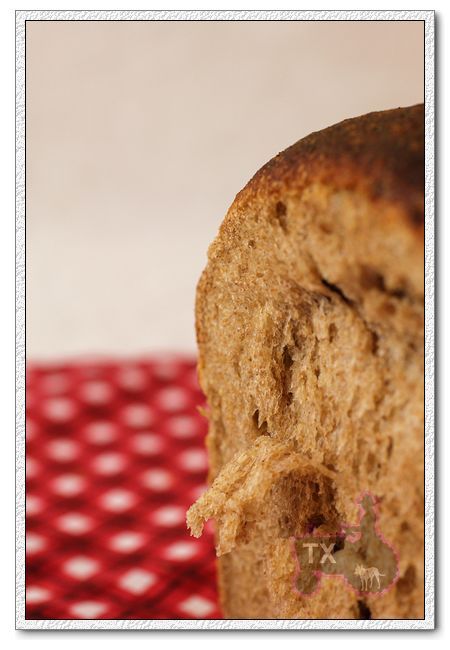


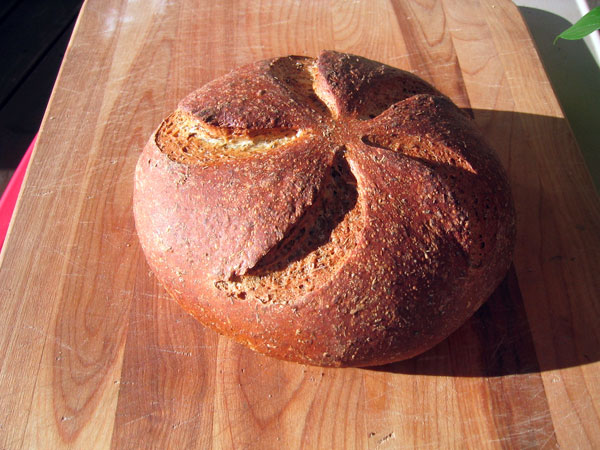
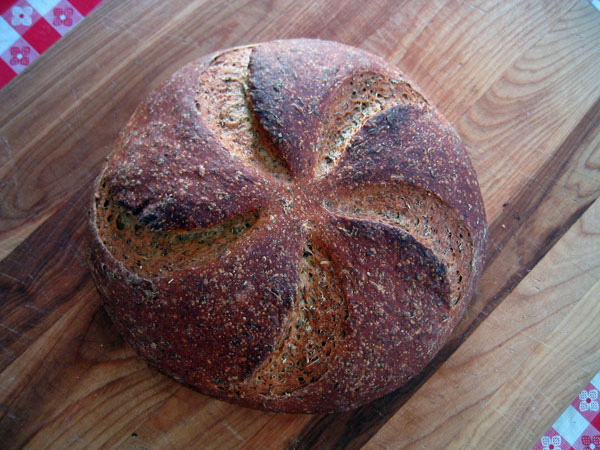
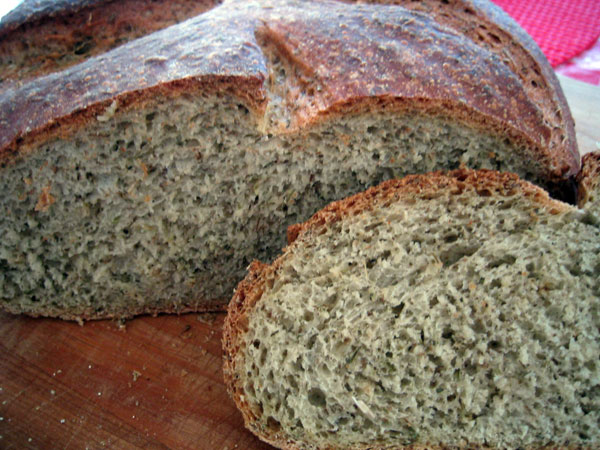
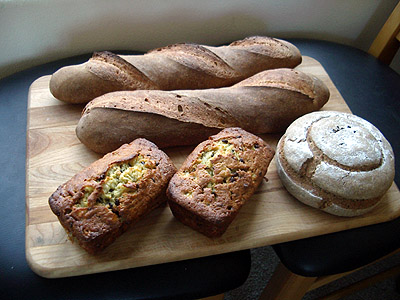






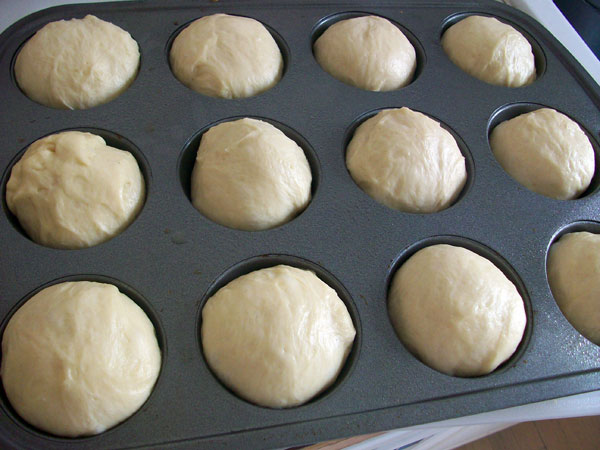

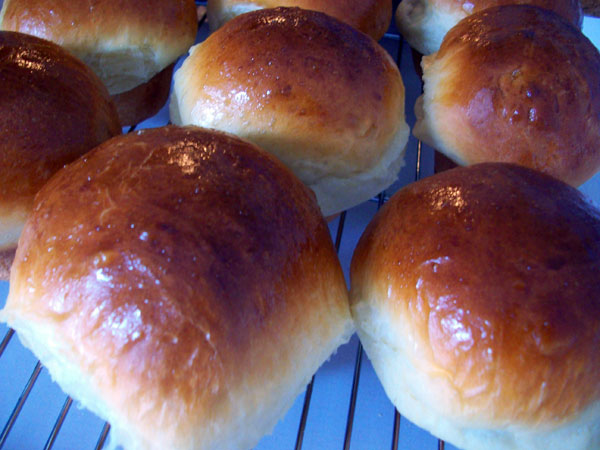
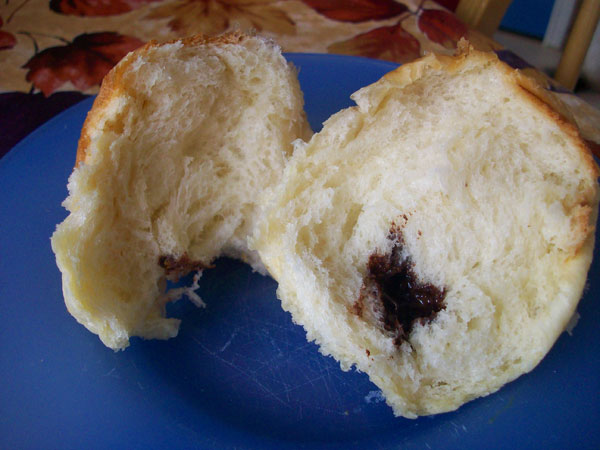



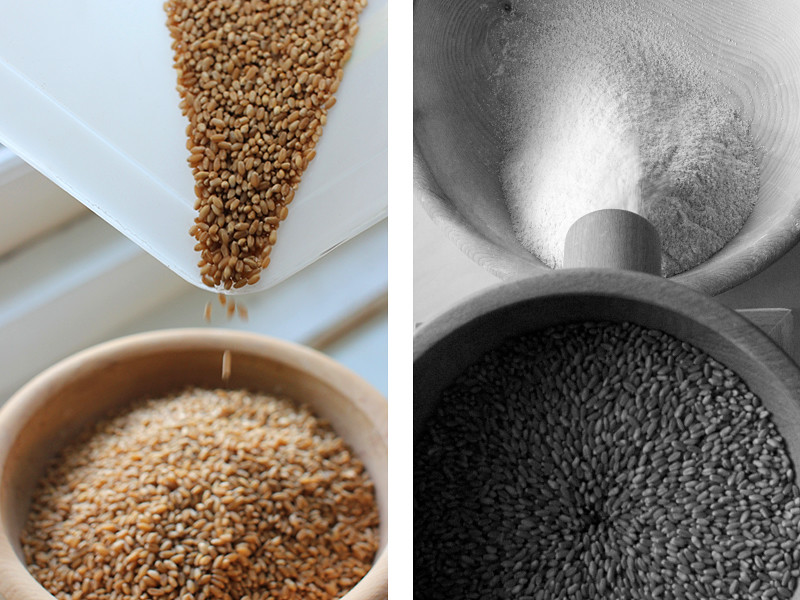

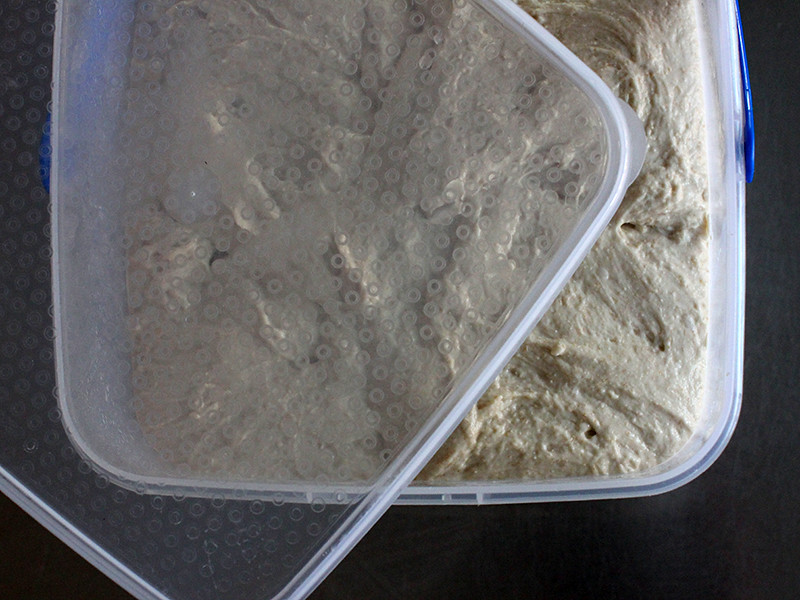
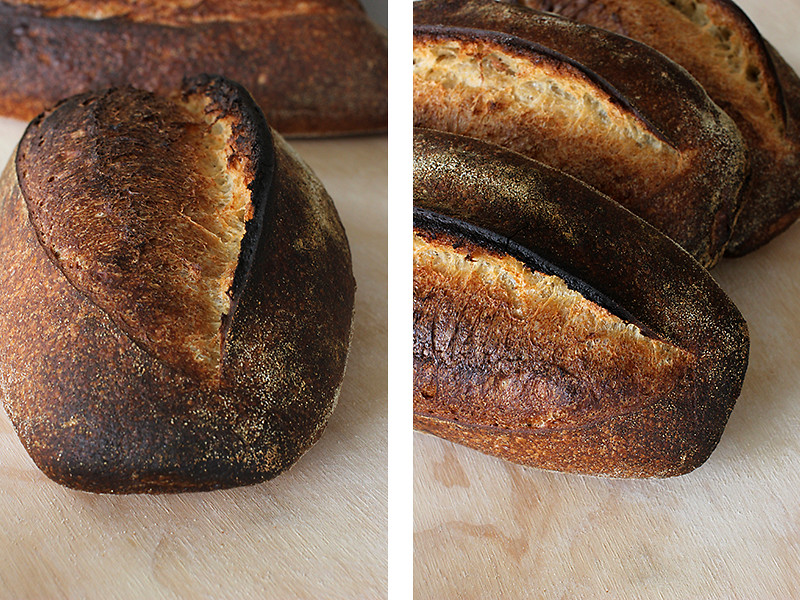
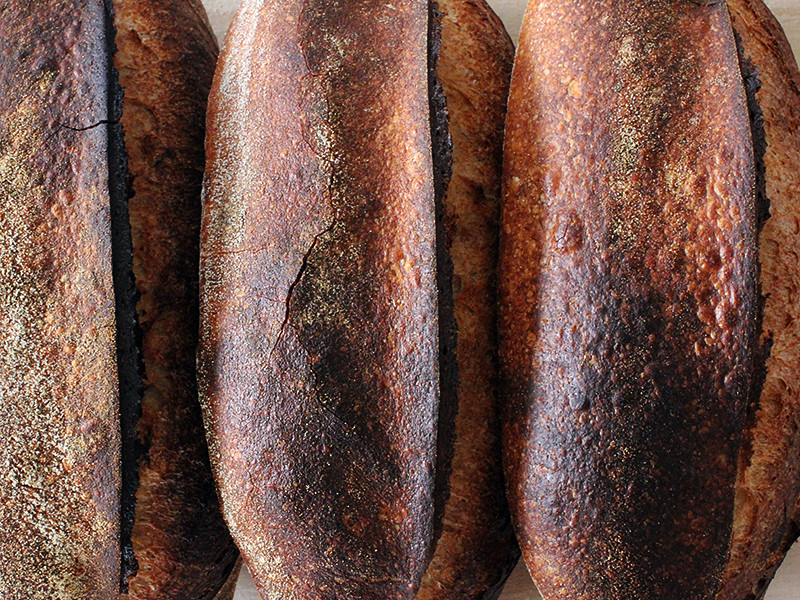
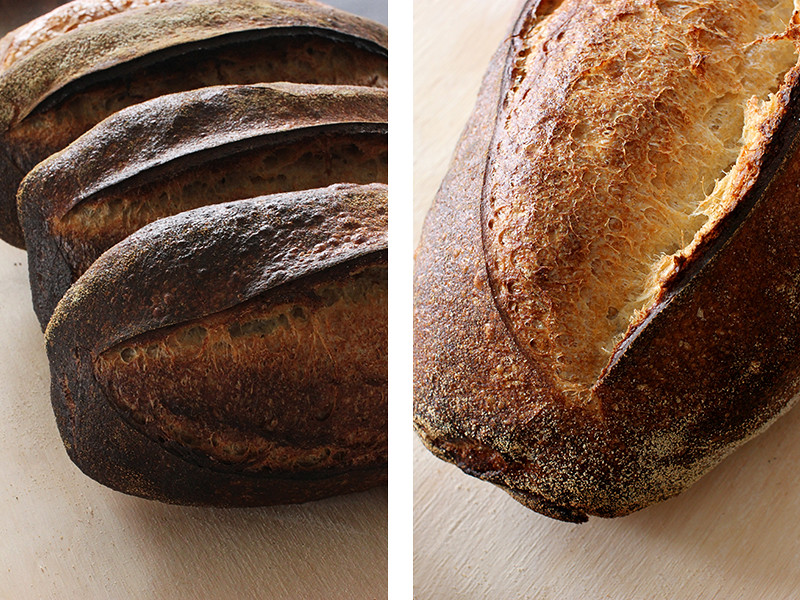
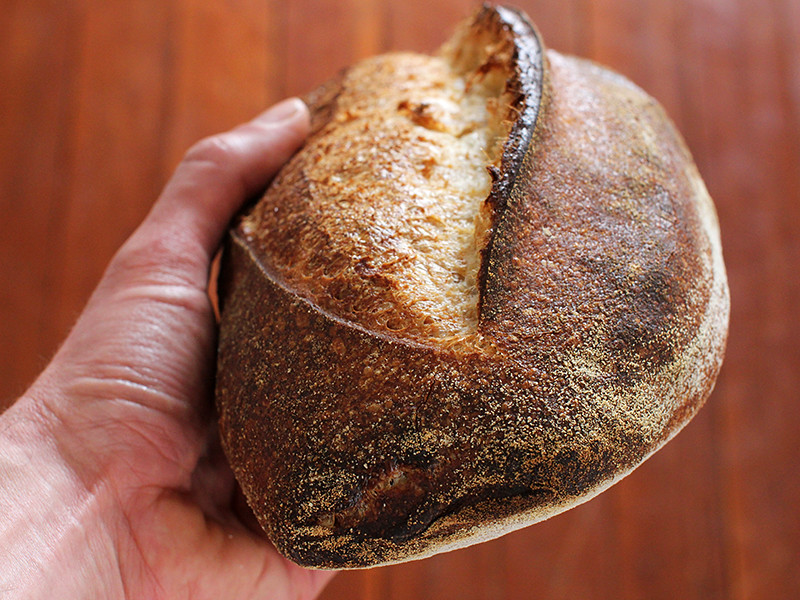

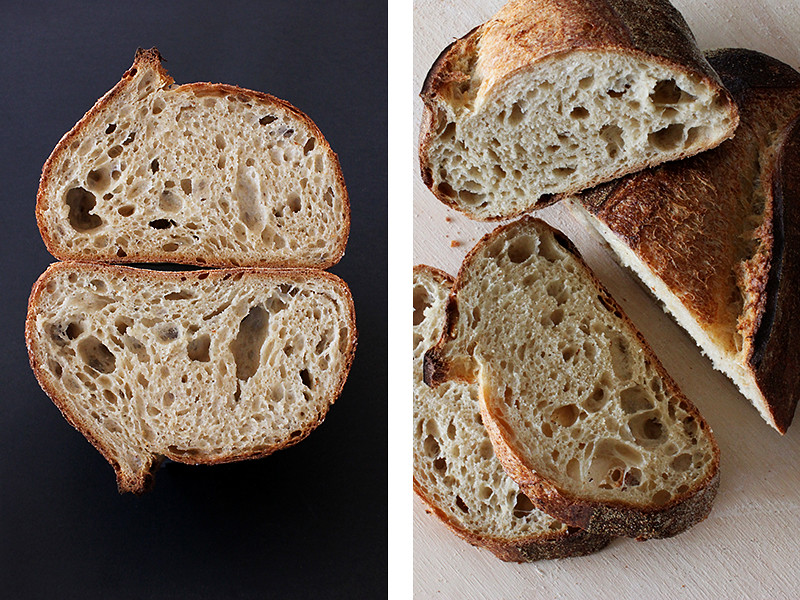
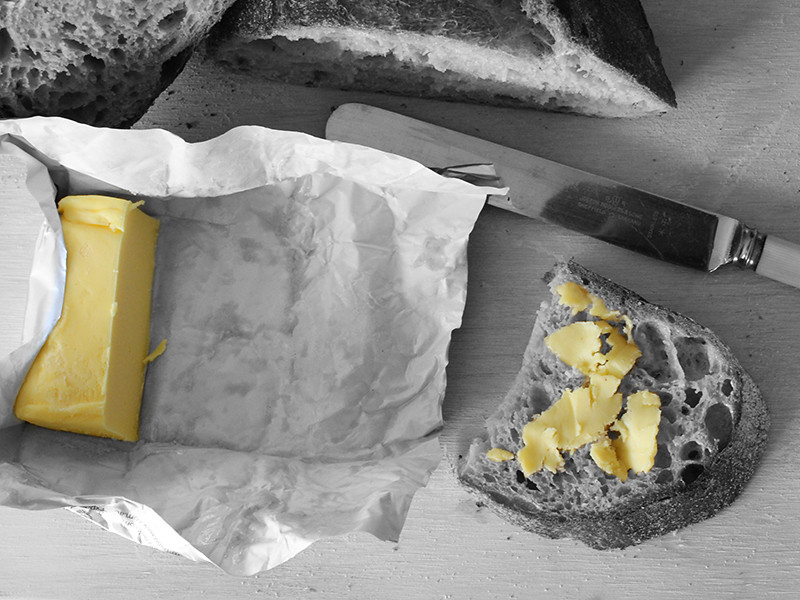

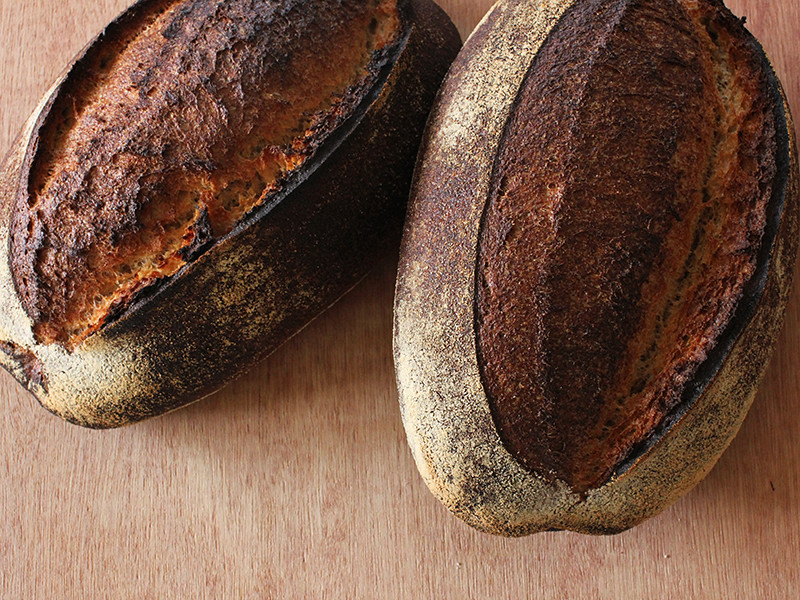
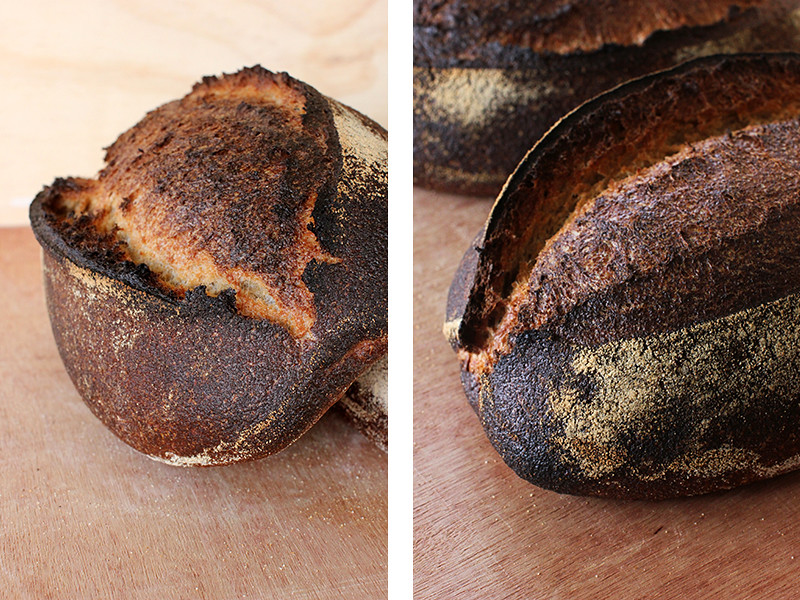


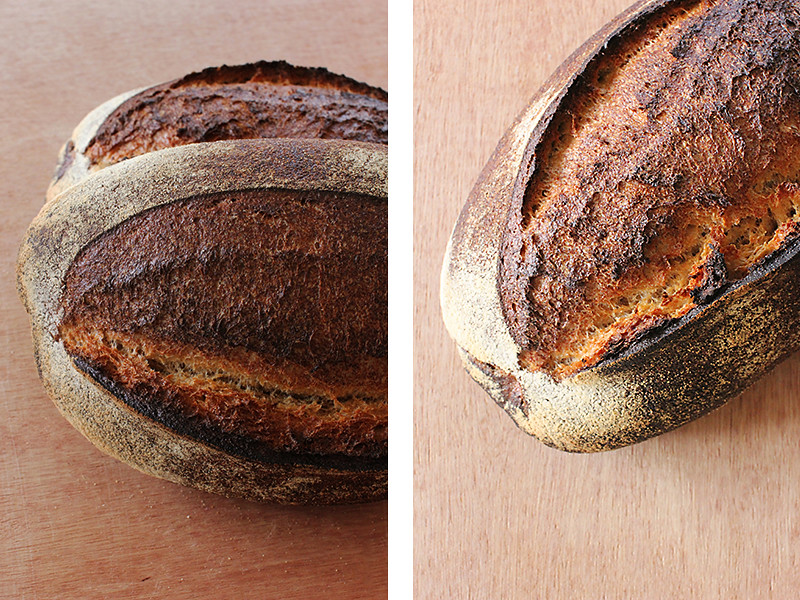
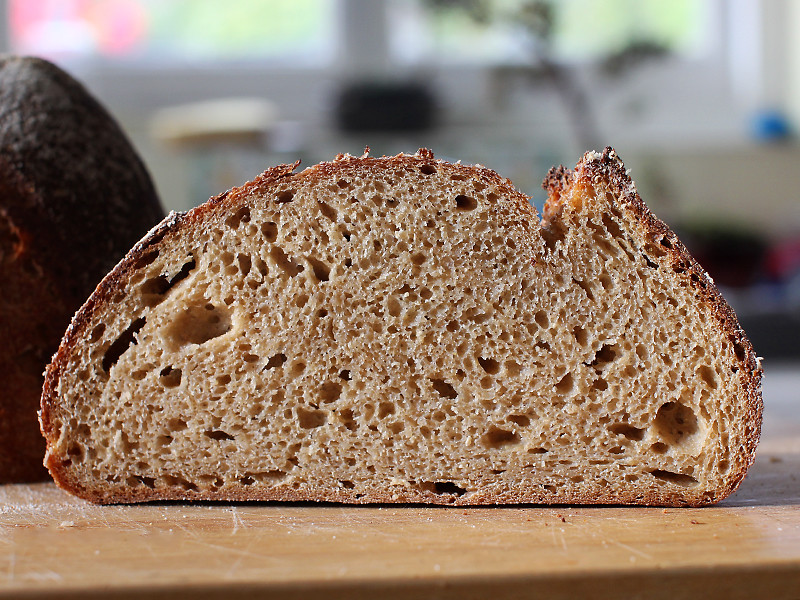
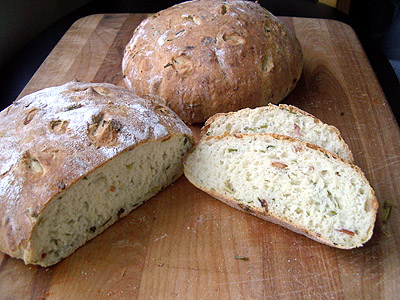 This weekend I found myself staring out the window at the abundant chives growing in my garden. What could I possibly do with them, I wondered, except eat them on baked potatoes? And how many baked potatoes can I eat before I never want to see another spud again?
This weekend I found myself staring out the window at the abundant chives growing in my garden. What could I possibly do with them, I wondered, except eat them on baked potatoes? And how many baked potatoes can I eat before I never want to see another spud again? 